NEIGHBOURHOOD MUSEUM: CULTURAL ACUPUNCTURE FOR “MODEST REVOLUTIONS”
By Anna Chiara Cimoli
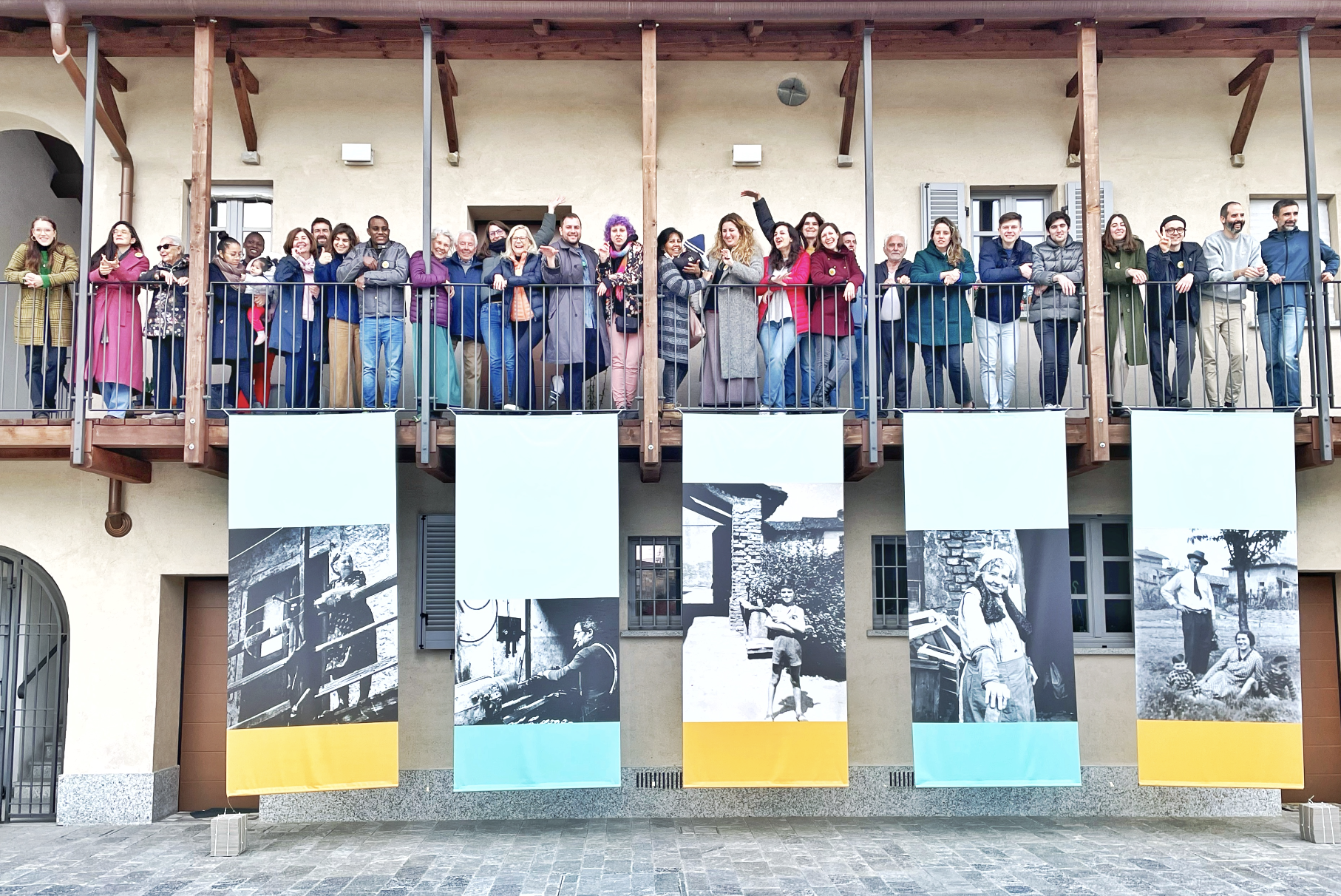
“Modest”, but political
Cultural work at small scale or on neighbourhood and local issues may seem a capitulation at a time of strong identity and social tensions, in which the growing class divide is apparent even to those who don’t want to see it, the dynamics of racism reverberate on a planetary level and divisive economic policies call for a radical revision of the role we attribute to culture. With his Modest Manifesto for Museums (which can be found in Un sogno fatto a Milano. Dialoghi con Orhan Pamuk intorno alla poetica del museo edited by Laura Lombardi and Massimiliano Rossi, published by Johan and Levi 2018), Turkish writer Orhan Pamuk launched a love letter to domestic, neighbourhood and so-called infra-ordinary museums. “The future of museums is inside our homes,” he wrote, emphasising the need to pulverise grand national narratives, the hazards of linearity and the rhetoric of beauty (always and only one beauty, always and only that one).
Beyond any nostalgic temptation or romantic retreat, the manifesto’s contents are profoundly political and speak of counter-narratives, counter-messages and re-writings that diverge from institutional ones. In short, gestures that not only philosophically question that construct but also overwrite them, insert themselves between them, actively disturb them: a swarm of gnats in front of the tiger’s eyes. This act of disturbance does not manifest in great symbolic movements or epochal upheavals but in micro-fractures that express themselves in the reinvention of the everyday, new ways of defining relationships, taking the floor, the possibility of constructing rituals and paths, networks and languages. The choice of the local dimension does not exclude a broad reverberation: on the contrary, it supports it and advocates for it.
The project I am describing here, that of a community museum in a Milanese neighbourhood, came about when ABCittà, a collective of architects, educators and urban planners that has been actively using the participatory design method for around 20 years, decided to identify itself with a service, rooting itself in a specific place. Along the way they came across the Borgo Cascina Conti, an old rural complex in the Greco district in the north-east of Milan that had been disused for decades. Viewed as an urban void riddled with drug dealing and petty crime, the complex has been undergoing regeneration at the hands of a public-private consortium (Milan City Council and the Borgo Cascina Conti company) since 2011. This project envisages not only the restoration of the existing historic buildings, but also the construction of new buildings, new landscaping, the creation of sports fields and the redevelopment of the square that lies at the heart of the complex.
As part of ABCittà’s restoration of the farmhouse, the practice launched a social project with a strong emphasis on the inter-generational: the mini-apartments created in the two buildings opposite are therefore aim for students and workers aged between 18 and 35, single parents with children and independent elderly people. This group of coexisting people with different needs and attributes has led, since 2018, to an articulated social fabric that has generated new needs and opportunities. While ABCittà moved in, guaranteeing a presence on working days, and bit by bit, a social concierge; a children’s play area; a communal laundry; and BiblioBiG, a communal library that is integrated in Milan City Council’s network and also houses the neighbourhood photographic archive, have gradually been created.
In addition to looking after the “internal” dimension (of spaces, relationships and services relating to the inter-generational residential project), ABCittà and the farmhouse residents interact daily with the neighbourhood through the urban vegetable garden and the railway arches (restored through a participatory design process and featuring interventions by artists selected after a call out by the municipality of Milan in 2018). It’s here that the climbing wall will be built thanks to a civic crowdfunding campaign (while it awaits its future permanent relocation, the wall is temporarily located in a former garage and offers free lessons for local children and young people). Other activities gravitating around this project include a buying group; BiGKids, a programme for hamlet residents and locals to meet around the theme of reading; Spesa SOSpesa for the distribution of food to families experiencing economic difficulties; a bicycle workshop and bike sharing.
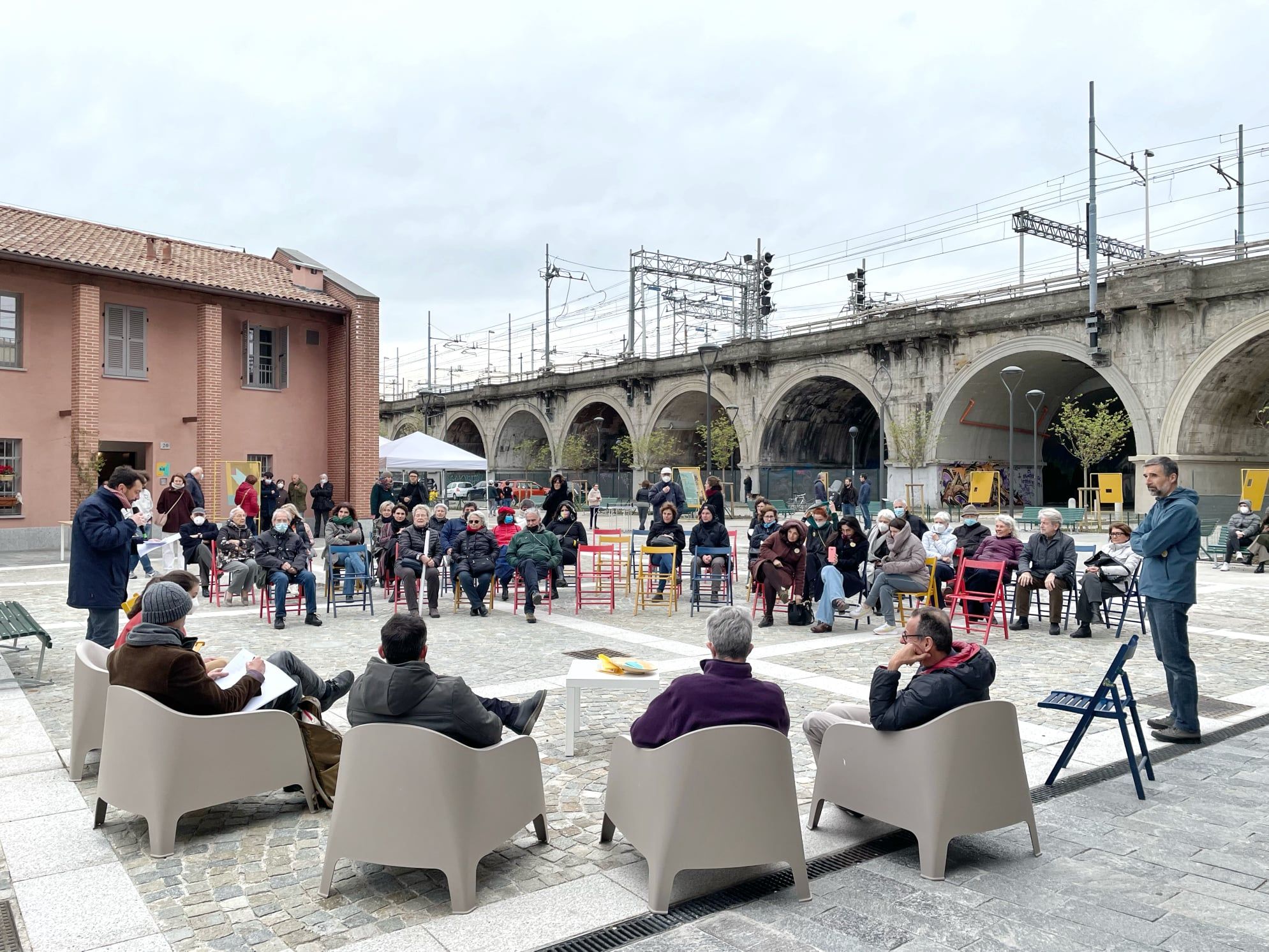
A museum among homes
While ABCittà worked on the construction of the project, the first residents (selected via a public call out) moved in, a complex network of partners and interlocutors was woven and the almost imperceptible but powerful game of restoring life to a neighbourhood after the long period of disuse and neglect was being played out. The courtyard could once again be walked through, the arcades too, the square was once again accessible; trees were planted, benches installed and water fountains turned on.
Alongside the ‘physical’ repair, stories and tales of former inhabitants, shared memories, old names (often in Milanese dialect), and other anecdotes resurfaced. Greco, which was annexed to the city of Milan a century ago in 1923, was a working-class neighbourhood with bowling centres and dance halls and a strong relationship to greenery (urban allotments) and water (the Martesana canal was a place of work for the washerwomen during the week and a place of recreation, with the beach and jetty for diving, on other days). The solid front of architectural redevelopment thus became intertwined with the intangible dimension of encounters between people, the flow of visits, the emergence of stories that were close to disappearing. How should these be safeguarded and made active and available to the ‘new Grechesi’ (locals)?
The museum format, although fluid, light and devoid of a physical location in this case, seemed appropriate as a container for this heritage. Therefore, thanks to funding from the Milan Community Foundation, MUBIG was born in 2020, a museum designed by ABCittà in partnership with Pinacoteca di Brera and Stazione Radio that describes itself as ‘decentralised, of the present, participatory’. MUBIG, which always works in co-curatorship with the neighbourhood’s residents, has three main focal points: exhibitions, walks and discovery boxes or ‘museums in a box’. To date two exhibitions have been installed, a series of podcasts accompanying the walks has been produced (by Stazione Radio on izi. travel) and two ‘museums in a box’ series have been created, devoted respectively to the theme of physical and immaterial borders.
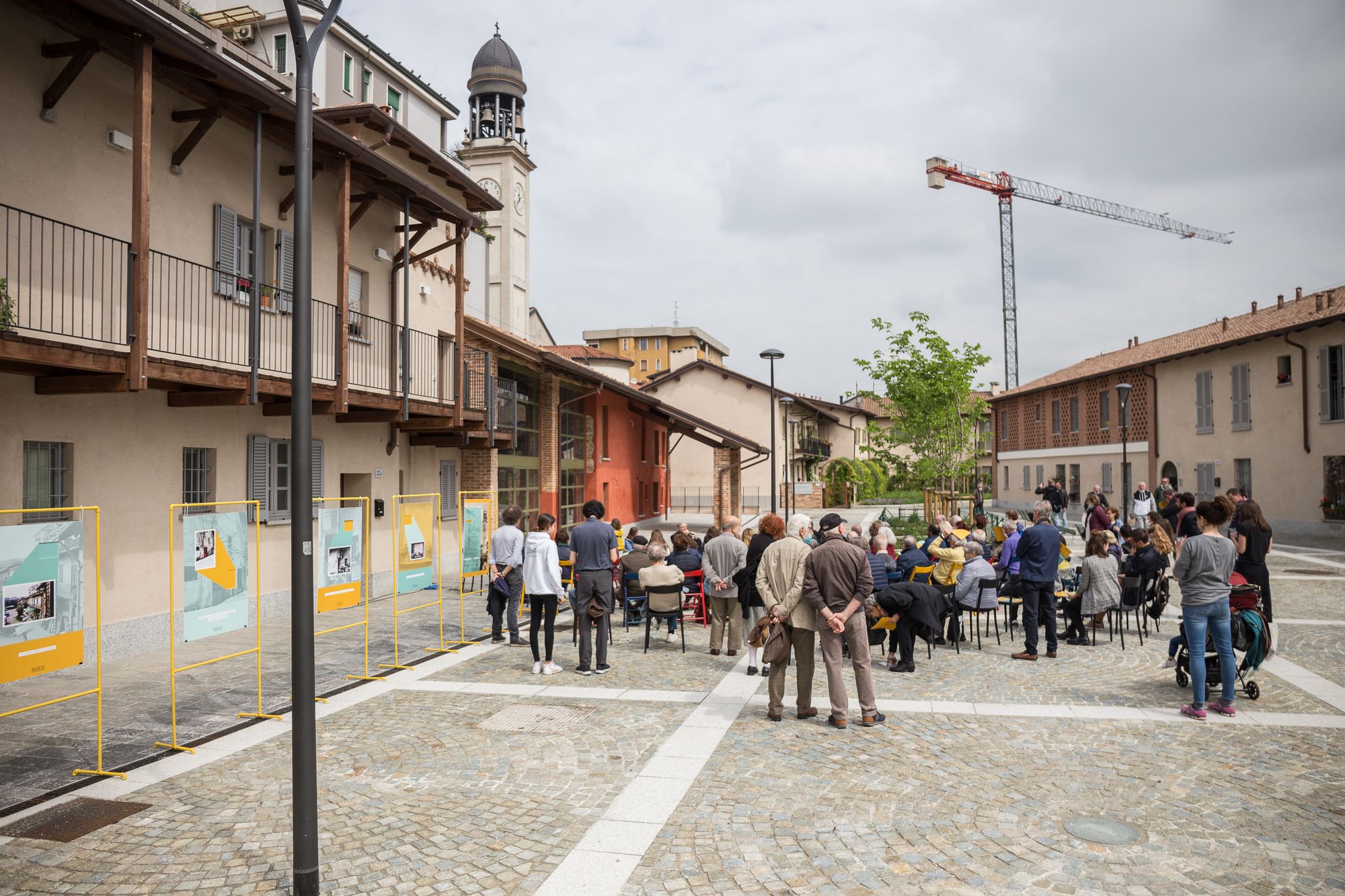
The three focal points share certain attributes that represent just as many methodological issues. The first concerns the interpretation of the relationship with the past, always oriented towards reading the present and building the future. The collection of historical documents, the daily practice of public history, the modelling of listening and archiving tools is always aimed at the construction of magnifying lenses that help us understand the economic, social and cultural dynamics that govern the present. In this sense, for example, reflecting on the transformation of their relationship with nature and their way of experiencing it (exploiting it for economic purposes, the choice of means of transport, the balance between leisure and work...) has led the inhabitants of the new/old hamlet to a greater awareness of the importance of looking after the area in a generative way. This involves, for example, taking care of the shared vegetable gardens, which are also a playground for children, a meeting place for domestic animals (proximity to animals was a feature of life on the farm), and from time to time also a stage for performances or a space for workshops, and so on.
A second important methodological aspect is the flexibility of MUBIG’s structure. While the original framework of the project was constructed by ABCittà with the two partners mentioned above, it is the residents’ enthusiasm that injects resources and ideas, reveals any vulnerabilities and re-orients any processes already in progress, suggesting possible sponsors, partners or interlocutors for specific activities. To give an example, in May 2022 the Pinacoteca di Brera lent MUBIG four self-portraits by 20th century artists (Melotti, Rotella, Buzzati and Munari) from their Zavattini collection for use in the exhibition ‘Abitanti. Da Brera a Greco’. These four new ‘inhabitants’ came to supplement, albeit temporarily, MUBIG’s collection, prompting a reflection on the boundaries of the individual in relation to society and the mobility of this threshold in the aftermath of the pandemic. The day was conceived as wide-ranging and diverse a public occasion as possible with workshops, a presentation of MUBIG in dialogue with the director of the Pinacoteca di Brera James Bradburne, the screening of a video produced by the Pinacoteca, the launch of ‘discovery boxes’ and other activities. During the co-design process for the day a local resident suggested involving a nearby art-focused secondary school, the Caravaggio, and asked students to paint live portraits of the people who attended the museum that day. It offered a significant opportunity to explore (in a different way) the contents we were working on: the continuity between generations, the boundary between individual and collective, the possibility of representation, the impact of a direct gaze mediated by the tool of drawing, the scope of an encounter and its possible repercussions.
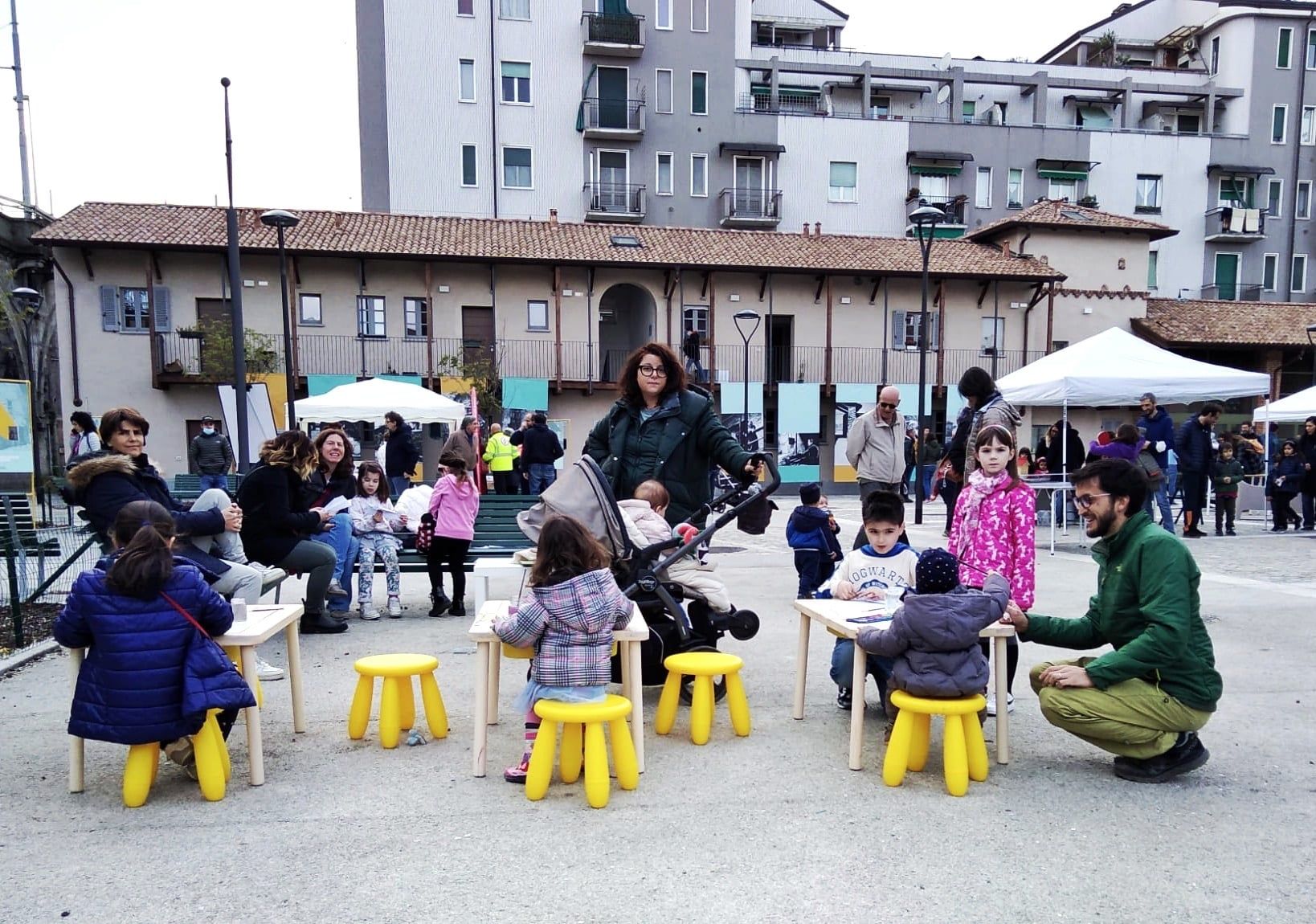
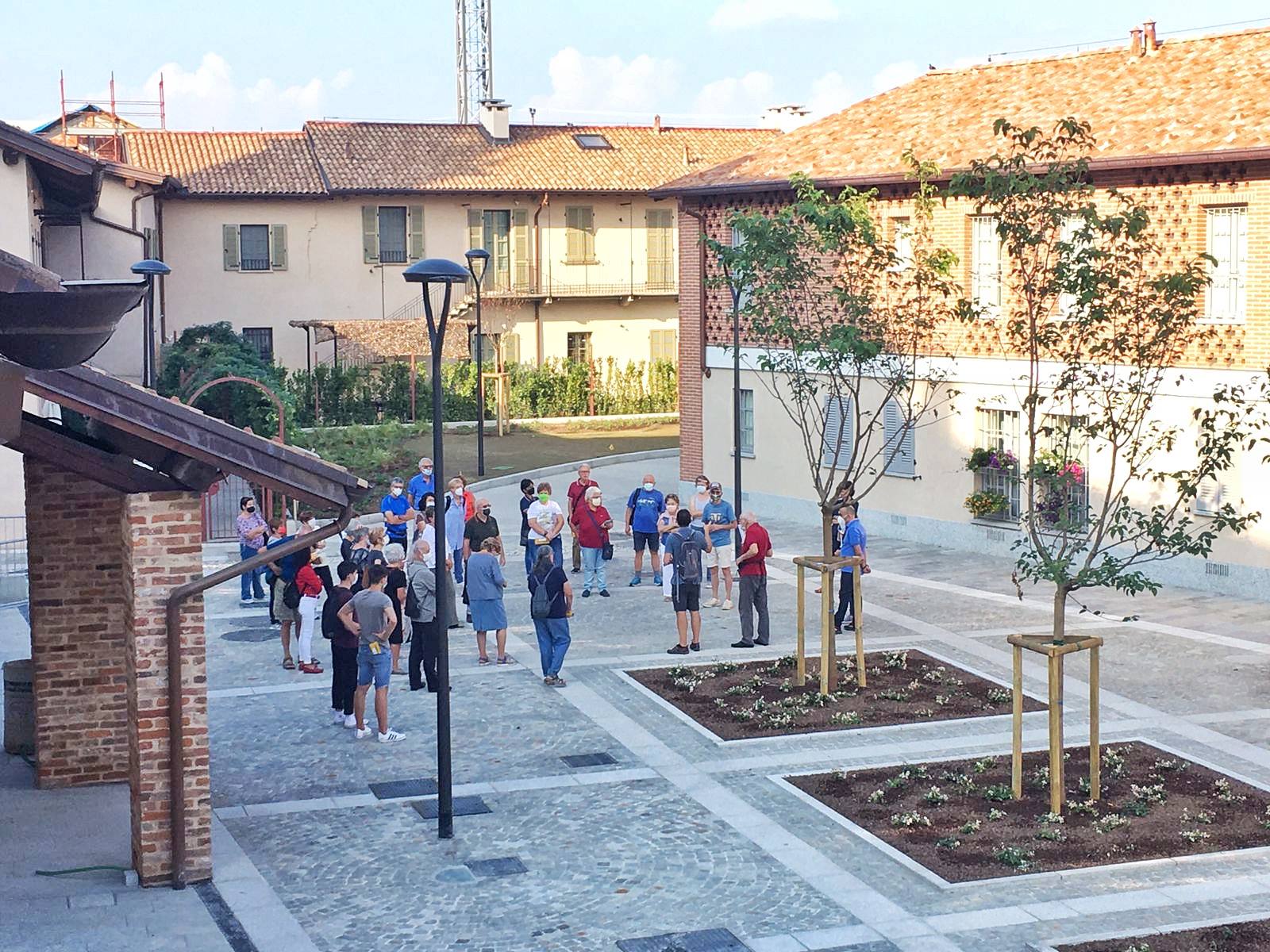
Openness to a certain degree of serendipity, in short, is an important aspect of the process. It was during the preparation for this exhibition that the discovery was made that the parish church of S. Martino in Greco, adjacent to the courtyard, held two paintings from the Brera collection on either side of the altar. They were relocated here following the dissemination of part of the museum’s collection to so-called ‘poor churches’ during the 19th century. As the result of a generous act by the museum director, the two altarpieces (respectively Visione mistica di Santa Caterina da Siena by Luigi Pellegrino Scaramuccia, ca. 1655, and Madonna della Misericordia, by the workshop of Federico Barocci in the late 16th-early 17th century) are now accompanied by captions written in the same style and graphics as the museum; this reinforces the idea of a relationship between museum and place which, going beyond the neighbourhood, has developed historically along Karstic pathways, the memory of which sometimes seems lost. All it takes is a gesture to reactivate it: this gesture, in particular, has led to a reflection on contemporary issues such as the legitimacy of the dissemination of heritage due to controversial historical events, the possible meanings of the concept of restitution and its implications, the risk of a ‘colonial’ dynamic between the centre and the margins, and so on.
Between the lines in these observations a reflection on the ‘imbalance’ between ABCittà and Pinacoteca di Brera emerges, and above all, beyond size, authority and history, on the diversity of their respective profiles. In short, what is the Pinacoteca doing in Greco? How can ABCittà ‘reciprocate the visit’ by exchanging skills and practices? What sense is there in bringing together worlds as different as the two museums and their respective neighbourhoods; one peripheral, with popular traditions and on the whole not yet gentrified; the other touristy, commercial, sparsely inhabited or even uninhabited? From the outset it was decided that the exchange of experiences and different ways of doing research would be central: it would therefore be an exchange on an equal footing from the point of view of vision of the city and authority in relation to a specific area or region. During joint planning sessions and mutual training workshops, the themes of listening to the neighbourhood, accessibility, the intergenerational dimension and heritage interpretation were explored and worked on.
Let’s zoom in. In the summer of 2022, the hamlet’s central courtyard and its surroundings hosted a number of performances and workshops of the ‘Memorie future (Future Memories)’ cycle, winner of the Milano è viva nei quartieri (Milan is alive in the neighbourhoods) call for proposals by Milan City Council and designed by Triennale Milano Teatro with Fondazione Giangiacomo Feltrinelli, Terzo Paesaggio and ABCittà. Alternately a stage, a concert hall, a classroom, an alchemical garden and a dance floor, the new ‘hamlet’ has stratified new memories, welcomed people who have travelled through the city to get to Greco, brought together neighbourhood elders (the first curators of MUBIG), hamlet residents, cultural professionals, families, researchers working on neighbourhood museums and many other facets of society.
Depending on the availability of new funding, MUBIG will work specifically on the search for new forms of storytelling and representation capable of holding together the past and the future, emphasising multi-vocal and multi-generational interpretation. In order to multiply its spaces and redevelop existing ones, MUBIG is also planning to expand into the railway arches. These great vaults, for a long time a place of decay, yet a distinguishing and characterful presence (the familiarity with the train drivers who know the hamlet’s rhythms and residents at this point and stop to say hello when they pass by, constitutes a metronome in MUBIG’s temporal score) have been the subject of a participatory design process. Here too, only what the neighbourhood needs will be done, and only after listening to those affected.

Art historian and museologist Anna Chiara Cimoli teaches at the University of Bergamo. She works on social museology and participatory practices, with an emphasis on the dynamics of migration, prejudice and stereotype, in collaboration with numerous institutions. Since 2020 she has been curator of MUBIG, the community museum in Greco. She is also chair of the CASVA Foundation, edits the visual studies magazine “Roots§Routes” with Giulia Grechi and Viviana Gravano and is the scientific director of the Museologia presente series published by Nomos edizioni
